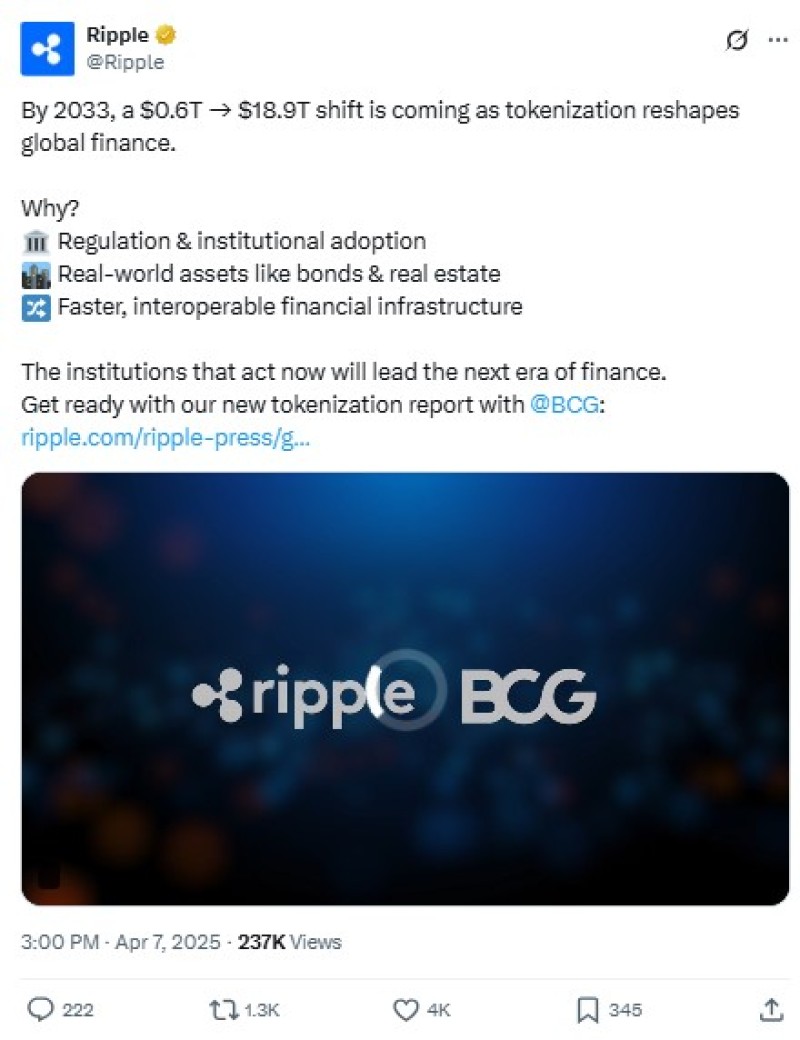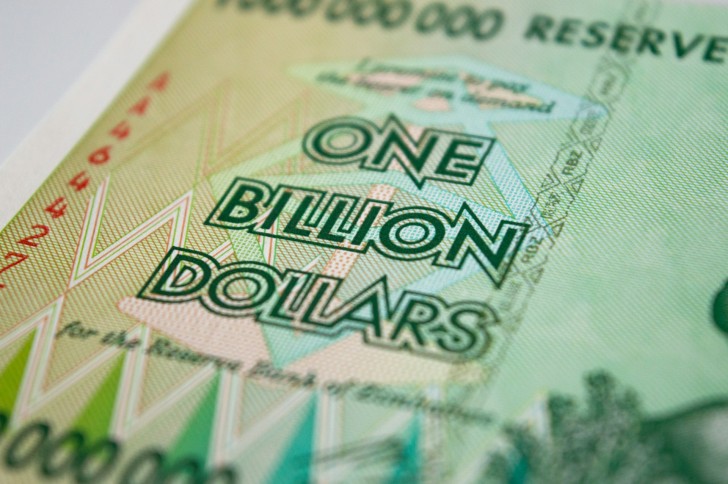Ripple, the company behind the cryptocurrency XRP, has released a report forecasting the tokenization market could reach a massive $18.9 trillion valuation by 2033, positioning its technologies to play a vital role in this financial evolution.
XRP and the Future of Asset Tokenization
According to a new report from Ripple, the tokenization market is expected to undergo explosive growth over the next decade. By 2033, the company estimates that the market for digital representations of traditional assets could reach $18.9 trillion, representing a fundamental shift in global finance.

Tokenization converts physical or traditional assets like real estate, stocks, and artwork into digital tokens that can be traded, stored, and transferred on blockchain networks. This innovative approach offers a modern alternative to existing financial systems, which are often criticized for being slow, inefficient, and burdened with unnecessary intermediaries.
How XRP Positions Itself for the Tokenization Revolution
Ripple isn't merely observing this trend but is actively positioning itself as a key player in the tokenization ecosystem. The company sees its native cryptocurrency XRP as perfectly suited for this evolving landscape due to its fundamental design characteristics.
XRP was built with speed and efficiency at its core—two critical factors for a tokenized financial system. The cryptocurrency specializes in facilitating rapid cross-border transactions at significantly lower costs compared to traditional methods. As tokenized assets become mainstream, the ability to move value quickly, securely, and with minimal fees will become increasingly important, making XRP's capabilities particularly valuable.
RLUSD: Ripple's $300 Million Stablecoin Complementing XRP
Complementing XRP's role in this ecosystem is RLUSD, Ripple's dollar-pegged stablecoin. With a current market valuation of approximately $300 million and daily trading volume reaching $150 million, RLUSD provides a stability mechanism crucial for businesses entering the tokenization space.
RLUSD offers organizations a way to engage with tokenized markets without exposure to the price volatility common in cryptocurrencies like XRP. By maintaining a stable value linked to the U.S. dollar, RLUSD creates an accessible on-ramp for institutions that remain cautious about cryptocurrency fluctuations but want to leverage blockchain technology's benefits.
Bridging Web2 and Web3: XRP as the Connective Tissue
As blockchain adoption accelerates globally, Ripple is strategically positioning itself as the bridge between traditional Web2 financial systems and the emerging Web3 ecosystem. The company views tokenization as a cornerstone of the future financial landscape and is developing its technologies to ensure this transition happens as smoothly as possible.
By leveraging XRP's speed and efficiency alongside RLUSD's stability, Ripple aims to establish itself as the leader in connecting conventional finance with blockchain-based alternatives. This strategic positioning could potentially cement Ripple and XRP's place in the financial ecosystem for years to come.
The ambitious $18.9 trillion forecast underscores Ripple's confidence in tokenization's transformative potential. If these projections materialize, the company's early focus on building infrastructure for this market could prove prescient, with XRP and RLUSD serving as foundational technologies in a reimagined global financial system.
 Peter Smith
Peter Smith

 Peter Smith
Peter Smith


